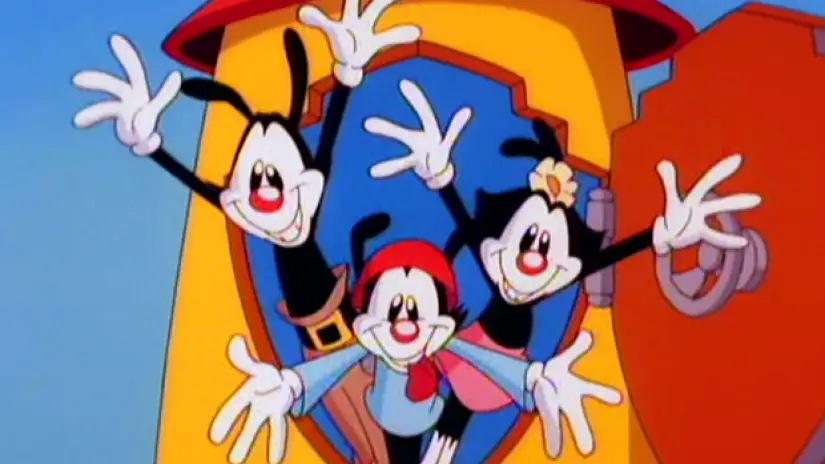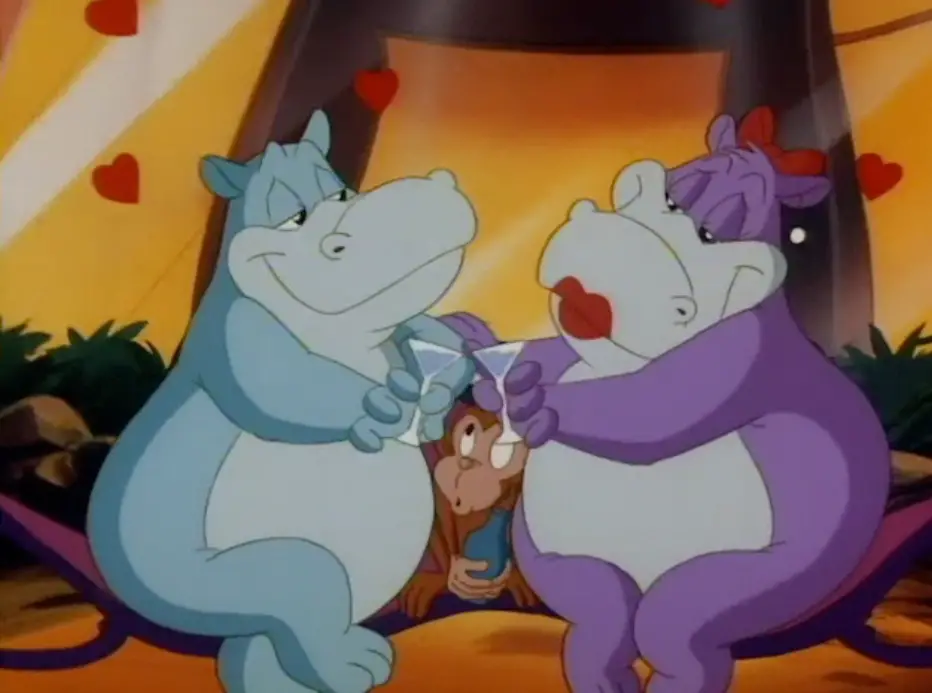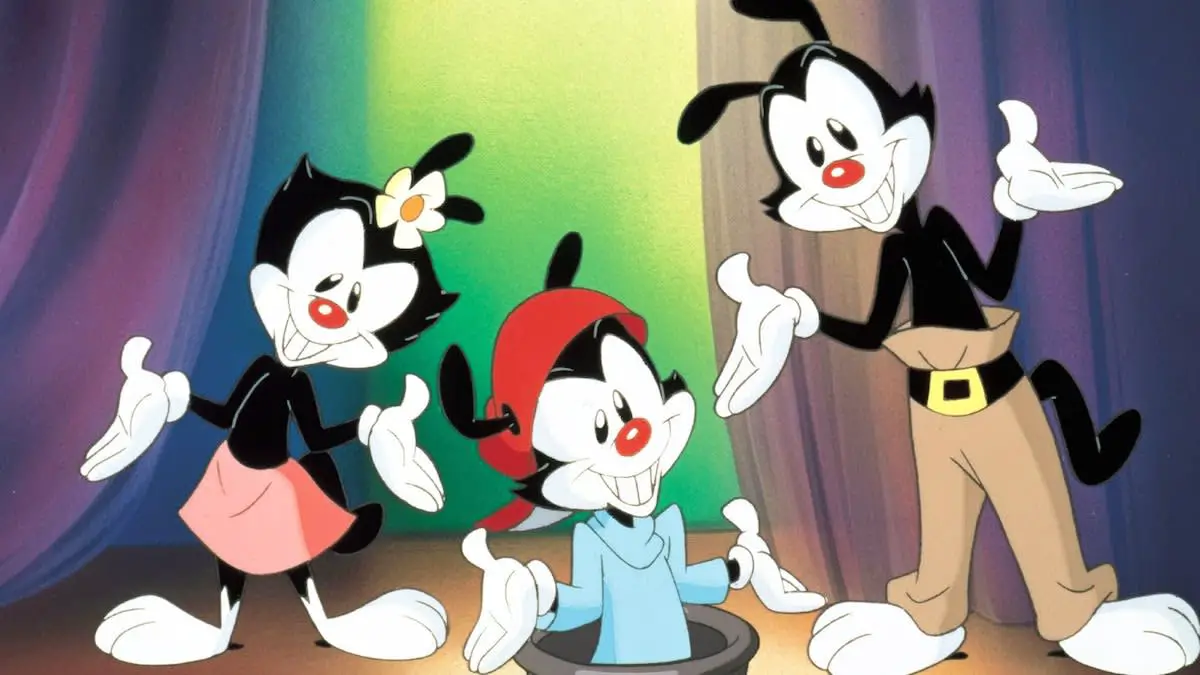Steven Spielberg is bringing back his hit cartoon “Animaniacs,” complete with the three Warner siblings and Pinky and the Brain, though whether other side characters, such as Slappy the Squirrel and the Goodfeathers, will be back is unconfirmed.
Either way, the zany Warner brothers, Yakko and Wakko, and their sister, Dot, will certainly be up to their usual antics, but the original show’s appeal is far more diverse than just the chaos they create. (But let’s face it: We hope for the chaos, too!)
Each character is unique.
Each character on “Animaniacs” is their own brand of nutty. Rarely is there a cast so different from one another and often making cameos in other segments. Their charm and interactions with other characters create wildly original plotlines.
There’s the dysfunctional duo, Pinky and the Brain, who are two lab rats trying to take over the world each night and failing miserably, either due to Brain’s arrogance or Pinky’s ineptitude. Their segments were so popular that they had their own spinoff TV show from 1995-1998.
There is also Slappy the Squirrel and her nephew, Skippy. As an old-timey cartoon star, Slappy is the slap-happy equivalent of a grandmother, who teaches her bubbly nephew about how great cartoons used to be while her old enemies try to squash their fun. Big on Looney Tunes-esque cartoon violence and dry wit, her segments are some of my personal favorites.

Then, of course, there are the Warner siblings who live in the Warner Bros.’ water tower in Burbank. I would say that they’re technically imprisoned in the water tower, but they have a habit of escaping those confines and running amok on the studio lot. They love harassing various movie stars, the studio shrink, Dr. Scratchansniff, and pretty much anyone else they come across. Witty, charming and musically inclined, Yakko, Wakko and Dot tend to take center stage wherever they are.
Who doesn’t want to sing about the nations of the world?
The cartoon appeals to younger audiences in some of the more educational content it produces. The characters take place in various time periods across the centuries and introduce themselves to prominent historical figures. They reference modern occurrences, people and things to historical figures who would have no knowledge about what they are talking about, but it doesn’t take away from the main plots.
In “Hooked on a Ceiling,” the Warner siblings run a ceiling painting company and try to help Michelangelo paint the ceiling of the Sistine Chapel. Of course, they end up replacing Adam and God in “The Creation of Adam” painting with E.T. and Elliot in the same pose (Cartoon Spielberg appears as “his eminence,” and Yakko chimes, “Painting is like showbusiness: You have to know your audience”). They also encounter Abraham Lincoln, Pablo Picasso, Ludwig van Beethoven and the captain of the Mayflower, Miles Standish.
In each segment that involves history, the show makes it fun for kids without demeaning the accomplishments of the person in question. In “Cookies for Einstein,” the characters help Albert Einstein discover the theory of relativity through song and dance as they try to sell him “Kid Scout” cookies and a Chia pet.
In the more serious episodes like “The Flame Returns,” the history-based and artistic elements are accentuated even further. It also has segments where Wakko sings all the states and their capitals in “Wakko’s America,” and Yakko sings all the nations of the world (as of 1993) in “Yakko’s World.” These elements of each episode create television meant as art and education for all ages.
The music adds a little magic.
“Animaniacs” spoofs various folk song melodies and parodies famous television show openings while also writing up its own music. In the show’s run, it won five Daytime Emmys in various musical categories. Each segment has its own intro music written in, and the Pinky and the Brain lyrics line up perfectly with the 1952 tune “Singing in the Rain.”
Although characters like the Warner siblings and Slappy certainly had some musical episodes, segments such as “Rita and Runt” and “Flavio and Marita” really pushed the music in the show. One episode of “Rita and Runt,” named “Les Miseranimals,” played on the musical “Les Misérables” and was one of the highlights of their segment.
An exceptionally musical episode that uses few lines from the characters is “White Gloves,” where Wakko’s gloves run off while he plays piano. The switch in musical genres is tasteful, and there is never a silent moment. In fact, there is rarely a silent moment in most of the episodes, anyway!
“That’s funny ‘ho ho.’ I want funny ‘ha ha.'”
“Animaniacs” retains a strong, clever sense of humor that ranges from puns to pop culture references. There are even episodes where Wakko burps whole songs as “The Great Wakkorotti.” There are literally jokes for every age.
Many of the other characters, such as Slappy and Brain, have rather dry senses of humor, with Slappy being curmudgeonly. There’s also plenty of physical humor — this is a cartoon done in a similar manner as “Looney Tunes,” after all.
Plenty of the humor also comes from the juxtaposition of serious historical periods and the Warner siblings introducing strange objects, jokes and other references. They also tend to break the fourth wall, as the main characters are aware that they are cartoons and mess with the others who don’t know any better.
Some of the humor is definitely more adult-oriented, not that the kids notice. When some edges closer to more adult audiences, Yakko would yell out, “Goodnight, everybody!” as if the show would be canceled the second the censors heard the joke.
With characters like Flavio and Marita Hippo, the show maintains humor that comes from hyperbolizing normal activities. Everything the characters do is over-the-top, from their affection for one another, their speech patterns and their mood swings. They’re the cartoon versions of reality stars.

Although the creators are exceptional at making serious episodes that are meant to exhibit historical, artful and musical elements in hopes to educate, they also poke fun at kids’ shows having morals explicitly stated. The Warner siblings sometimes have short segments at the end of episodes where they whip out “The Wheel of Morality,” where they pick a moral based on a spinner akin to “Wheel of Fortune.”
“It’s that time again!” chirps Yakko, the eldest of the siblings and undisputed leader of the bunch.
“To search for Elvis at 7-11?” Dot asked in one instance.
“To make the FOX censors cry?” Wakko said in another.
As Yakko spins the wheel, they usually pull out strange “morals,” a particularly odd one being “Opossums have pouches like kangaroos.” Another time they won a trip to Tahiti instead.
The mixture of different comedic styles and jokes wins over a crowd where the sense of humor is unique to each person, and “Animaniacs” does a great job of capturing different the different facets.
“Animaniacs” reflects classic cartoon television at its finest by exhibiting slapstick alongside educational properties and timeless musical interpretations of folk songs and themes.
The show will go straight to Hulu, where the original 99 episodes and Spielberg’s other show, “Tiny Toon Adventures,” currently reside. Although some of the jokes in the original “Animaniacs” might go over the younger audience’s heads (“Why is Bill Clinton playing the sax in the intro?”), most of the music and intelligent humor is utterly timeless.

















